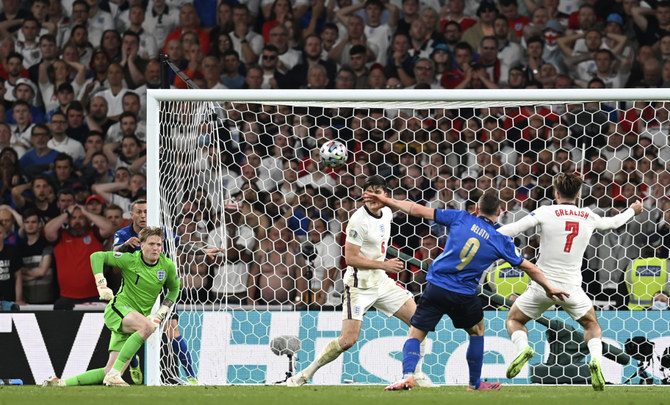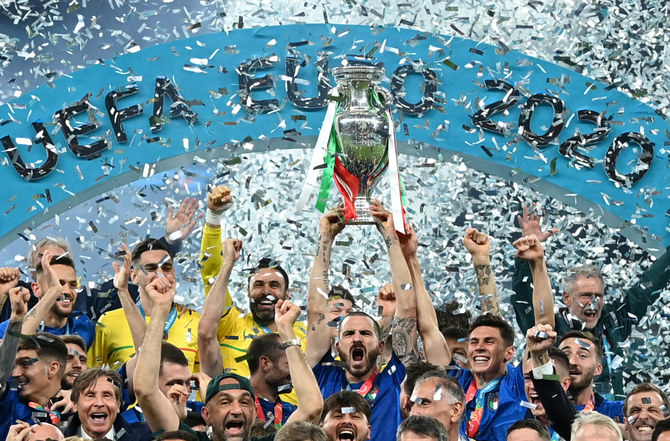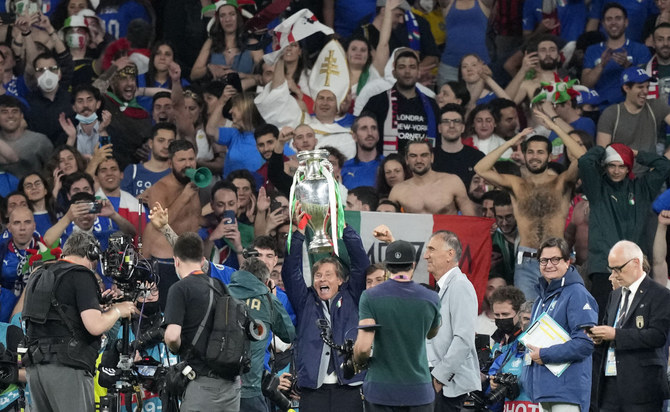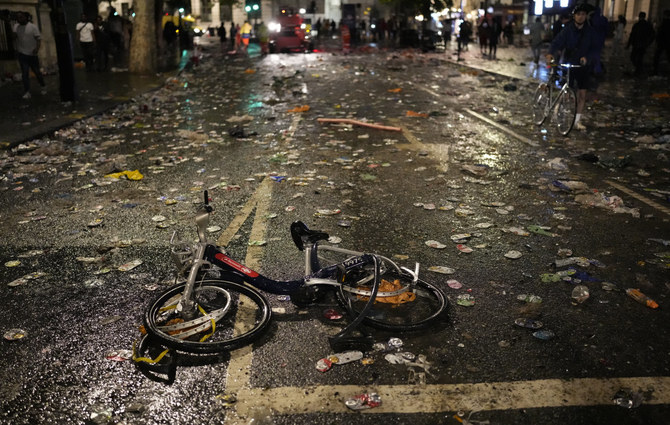LONDON: Italy wrecked England’s Euro 2020 party at Wembley on Sunday, winning the final on penalties to plunge the host nation into despair and prolong their 55-year wait to win a major title.
Roberto Mancini’s men recovered from the shock of conceding the quickest goal ever in a European Championship final to equalize and held their nerve to claim a 3-2 shootout victory.
It is the second time Italy have been crowned European champions and comes after the embarrassment of failing even to qualify for the 2018 World Cup in Russia.
“We did well,” Mancini told RAI Sport. “We conceded a goal straight away and struggled, but then we dominated the game.
“The lads were wonderful, I don’t know what more to say. It’s important for all the people and all the fans. I hope they’re celebrating (in Italy).”
The partisan crowd was whipped up to a state of fever pitch by rousing renditions of “Three Lions” and “Sweet Caroline” before kick-off.
Both teams took the knee before the whistle in a display of solidarity against racial injustice before England raced out of the blocks.
Gareth Southgate’s team were ahead in just the second minute when defender Luke Shaw finished coolly at the back post after an inviting cross from the recalled Kieran Trippier.
The goal stunned a disbelieving crowd of more than 67,000, mostly decked out in red and white.
In steady rain, the crowd provided a relentless wall of noise as the home side repelled Italy’s attacks and threatened to increase their lead.
England goalkeeper Jordan Pickford made a fine one-handed save from Federico Chiesa’s effort to preserve his side’s advantage with about half an hour to go.
But minutes later they were level when Leonardo Bonucci scrambled the ball into the net from close range after England failed to clear.
Italy were now dictating play and their supporters found their full voice behind the goal they were attacking.
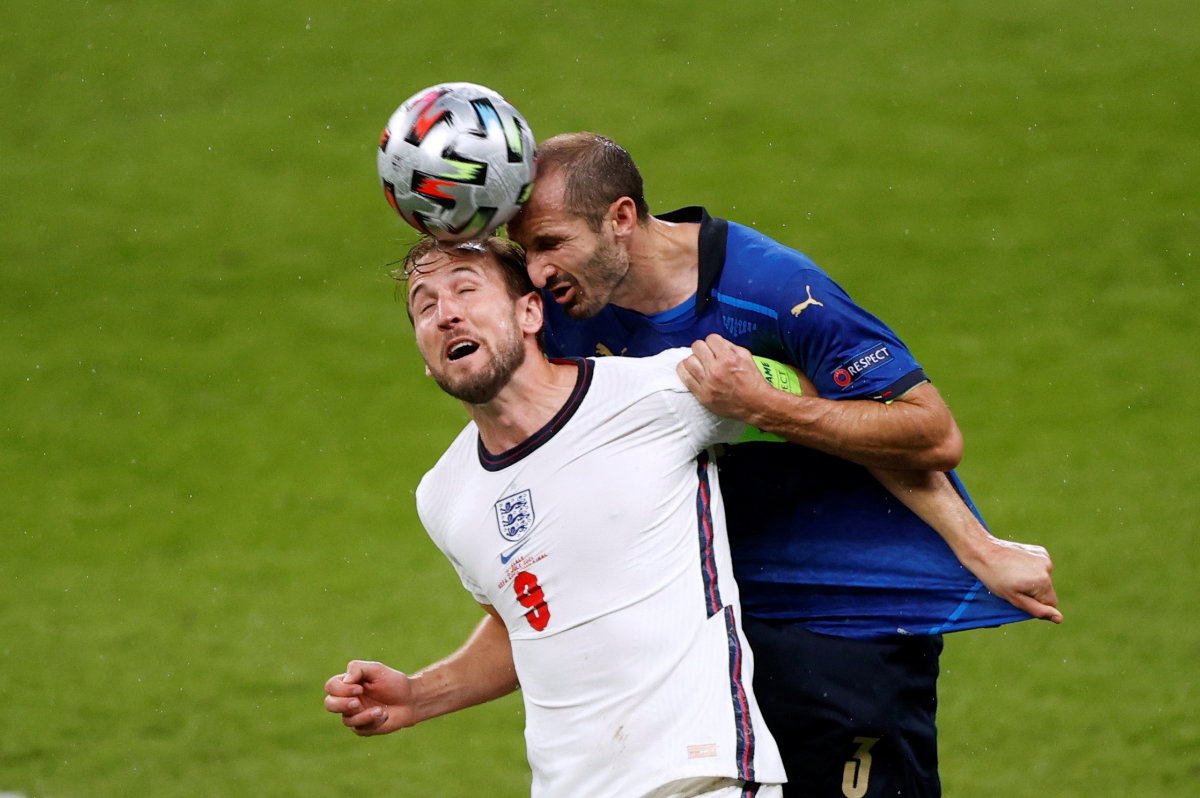
Italy's Giorgio Chiellini in action with England's Harry Kane. (Pool via REUTERS/John Sibley)
With four minutes remaining of normal time a pitch invader stopped the action and stewards struggled to catch him adding to a sense of chaos at the stadium after ticketless fans earlier forced their way in.
Normal time finished goalless despite a flurry of substitutions and the sides were still locked at 1-1 after extra time.
Pickford saved spot-kicks from Andrea Belotti and Jorginho but Marcus Rashford, Jadon Sancho and Bukayo Saka all failed to find the net.
Italy captain Giorgio Chiellini lifted the trophy to the delight of the country’s fans as the small pocket of Italian fans celebrated wildly.
The atmosphere around the stadium was frenzied in the build-up to the match, which kicked off at 1900 GMT, with supporters draped in England colors downing pints of beer and chanting anthems.
But as the start neared, the climate became tense, with thousands crammed into the pedestrianized Wembley Way, strewn with broken glass.
Fans — with few signs of mask-wearing despite surging coronavirus infections in Britain — threw cans of beer, flares and traffic cones into the air.
Footage posted on social media showed hundreds of supporters battling to get past lines of stewards and police, trying to force their way through security cordons and scaling walls.
Another video appeared to show violent clashes between fans inside Wembley itself.
Police said in a statement that a “breach of security... resulted in a small number of people getting into the stadium without a ticket” but the number appeared to swell the official crowd significantly.
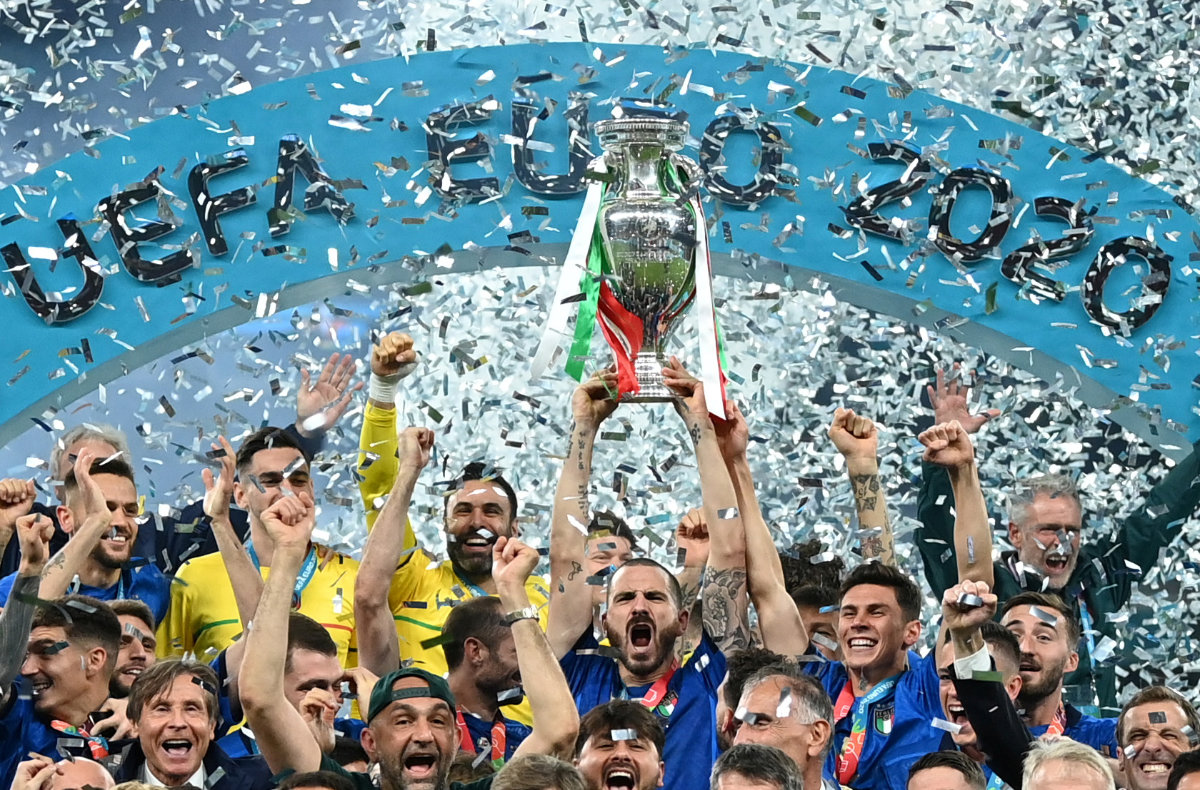
Italy celebrate with the trophy after winning Euro 2020. (Pool via REUTERS/Michael Regan)
Italy had been arguably the team of the tournament heading into the final, sweeping through the group stage with a perfect record before knocking out Austria, top-ranked Belgium and Spain to reach the final.
Revitalized since Mancini took over after their failure to qualify for the 2018 World Cup, the Azzurri were on a remarkable 33-match unbeaten run leading into the final.
The four-time world champions’ lone previous European Championship triumph came in 1968. They were beaten finalists in 2000 and 2012.
Southgate has revolutionized English football since taking charge in 2016, leading his team to the semifinals of the 2018 World Cup, where they were beaten by Croatia but they fell just short at Wembley.
It means they are still waiting for their first major title since winning the 1966 World Cup on home soil.
Southgate said it was his decision to put Arsenal teenager Saka as his team’s final penalty taker
“I chose the takers,” Southgate told ITV. “I’m unbelievably disappointed not to go one step further.
“We decided to make the changes at the end of the game, but we win or lose together as a team.”
British authorities had warned of the dangers of large gatherings ahead of Sunday’s final, fearful of the highly transmissible Delta coronavirus variant that is firing outbreaks across the world.
Health experts have expressed concerns about Euro 2020 events becoming super-spreaders throughout the tournament, especially in Britain and Russia.


